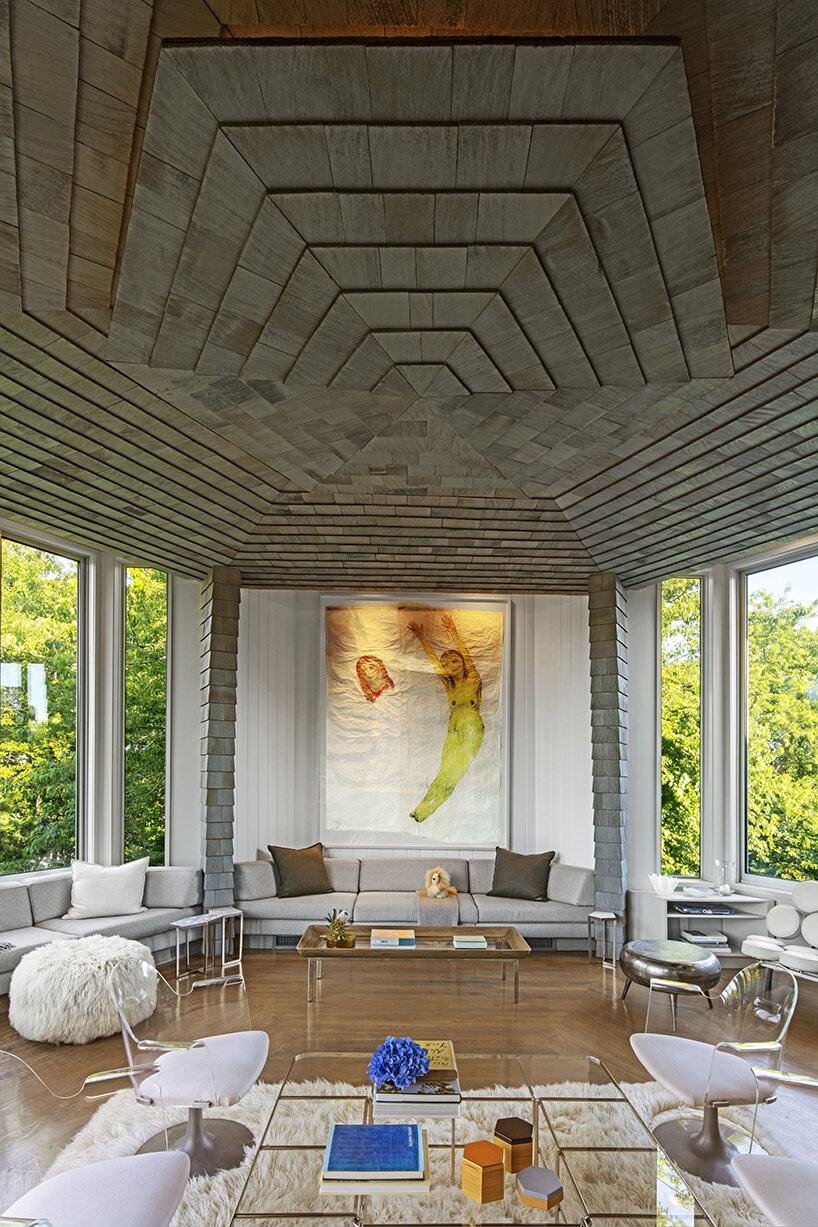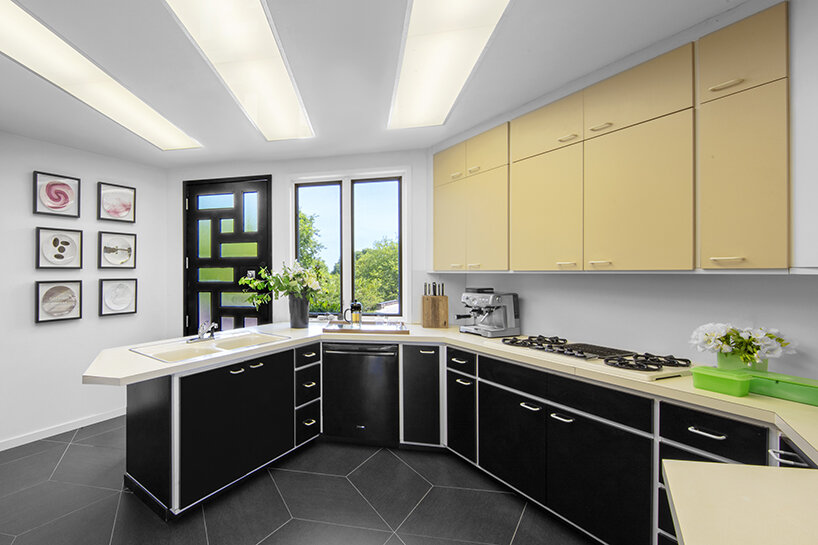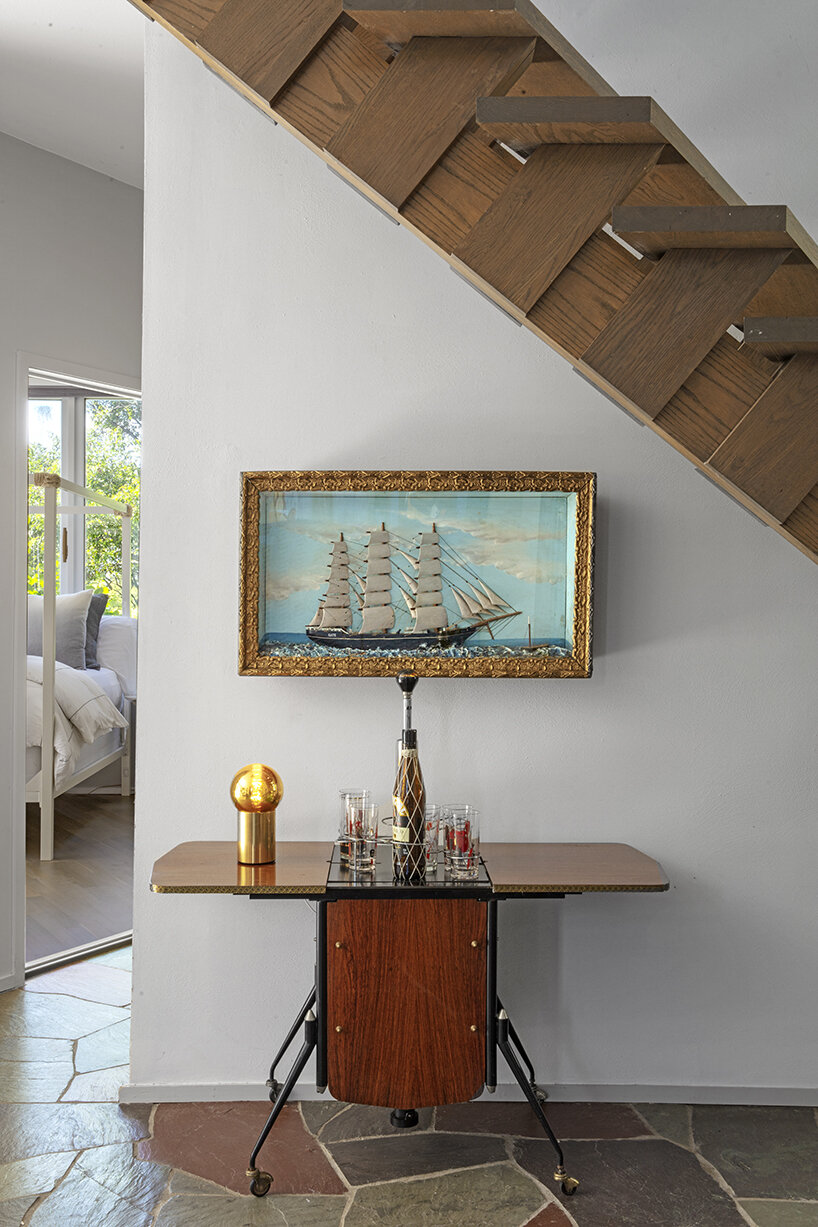what defines good art for me is a series of things. it takes practice, education and seeing a lot of art, to be able to walk through a show like art basel and end up with a few really good pieces for the right price. understanding ‘good art’ does not happen overnight, honestly, it can take years. I grew up with a conservative father whose idea of fun was to visit art and history museums all over the US — I preferred the art museums. I have been looking at art intensely since I was seven.
a memorable experience was when CAMH (contemporary art museum houston where I later became a board member) had an exhibition of live chickens in cages in various stages of molting. it was fascinating — the colors, sounds, movements and overall experience. my father (again very conservative and traditional in his own taste) said, ‘well, I am not sure I consider that art, but it is educational and helps you see the future.’ I remember that comment often when I look at art that I cannot personally relate to, but I can see that it is ground breaking, of today and important.
CAMH does not have a permanent collection as they feel if they do their focus will not look forward — their saying is ‘always fresh always free’ and they exhibit works they feel move art and art appreciation forward. good art sometimes is not work that you are comfortable hanging in your living room. good art is made out of a passion to express what one sees and feels.

good art, in my belief, is an expression of the times and society and can even be a prediction of the future. good art is made by good artists who have a passion and who have studied intensely. not every work a good artist makes is necessarily good art, but it is still collectable as a piece of that artist’s life. often an artist best work is done in a certain period of their career when they discover how to best put their feelings into art and before audiences start buying it and want them to repeat it over and over again — like an early damien hirst medicine cabinet vs a new dot multiple series or an early larry bell glass box sculpture (transformative for me and highly influential on my work) vs a new two dimensional work.
often an artist work is transformed by what sells or what the major collectors and influencers consider to be good art. I am fortunate to have known walter hopps who was the director/curator at the menil houston for many years. his vision along with dominique de menil’s vision and patronage significantly shaped what we now consider good 20th century modern art.
a fun story for me — I moved from LA back to houston (for family reasons) in december of 1999 and I thought my experiential creative life was over coming back to texas. I was shocked out of that notion quickly while literally sitting between walter hopps and robert rauschenberg at a dinner with one of my favorite gallerist, barbara davis and her patron marilyn oshman. the conversation changed my perception of houston and my appreciation of what art can do for one personally and for a community — that one dinner was actually life-changing.

DB: a collection of art is usually curated, can you illustrate a few of your themes? criteria?
LR: I consider myself to be a relatively new curator though I have been looking at art intensely since I was 7, studied art for three years at the university of texas austin, till I switched to architecture, have been to the major art shows annually now for over twenty-five years and have been a part of curating significant art collections since 1990 in los angeles where I began to work with my commercial office clients who were art savvy and growing their collections. my reason for saying this is that again I feel it takes tremendous research and constant education to know what is current and important in art. to be able to curate an important collection is a gift and a learned ability.

that said… to me, there is not one theme as my clients are so diverse — some are offices, some are homes, some are hotels and some work is placed in vulnerable areas — all of this influences the collection. I do though like to consider a ‘common thread’ or theme as you note for each.
1.) when I curated the art for the surrey hotel in upper east side ny (the hotel remained the no.1 hotel in NYC for ten years from 2010 till it closed due to COVID) I wanted to explore works in black and white. I had conceived the hotel as if ‘the pied-a-terre of coco chanel as seen through the lens of a black and white camera.’ it was the first time I had been tasked to design in a traditional beaux arts classical manner. I turned to the notion of set design having spent fifteen years in LA and I wrote a small script for the set — it was simply coco coming into her pied-a-terre, throwing her fur coat across a chair in the lobby and exclaiming to the doorman that she was going for a martini and to please take her coat to her apartment.
with this I imagined coco’s life if it were now and the art she would collect — it would not be conservative. this collection consisted of claus oldenburg, william kentridge, jenny holzer, cecily brown, chuck close and liz deschenes (which we bought from miguel abreu gallery and later donated to the whitney). each of these artists create work that is a statement about the times, what is happening to nature and the environment and society.

2.) a recent collection I am curating consists of art and artists who explore nature, geography, terrain and materials of the earth in their work. artist like michael heizer, richard serra, renate aller and anish kapoor. this collector, new to art, has a significant mineral collection and is a supporter of alternative energy. sometimes a ‘theme’ like this helps make the patron feel more comfortable with the art and feel it relates personally.
3.) when I bought for a new york client who had never purchased art before, I was having a hard time getting her comfortable with how to start. I told her that when I first started buying art and even today, some of my favorite pieces are the drawings an artist does before the painting as I feel they are the most honest and expressive, she immediately said I love drawings and we made lovely collections including picasso, degas, henry moore, william de kooning, joan mitchell and giacometti among others we later supplemented with paintings by richard pousette-dart, zhang huan, alfred lesley, cleve gray — a collection of mostly 20th century post war art.

4.) in general, I like to have ‘known’ artists mixed with unknown artists I feel are of importance and whose work I feel relates in some way. I feel this keeps the collection ‘fresh and on the edge,’ but establishes it as a collection of note.
5.) for myself — I buy what I love and I tend to buy established museum collected artists who are for whatever reason under the radar at the moment and then very young unknown artists. example of under the radar name artists at the time I purchased (claus oldenburg, larry poons, larry bell, fernand leger, victor vasarely, john baldessari (till he passed away last year), sol lewitt gouaches, (which he used to make every morning after swimming before he started into his more rigorous work).
a few of the young artists I collect — yehudit sasportas (israeli artist) + jennie c jones (african american/brooklyn artist) + andrew brischler (brooklyn artist) + andrea bianconi (milanese artist) + paul fleming, eduardo portillo and troy stanley (houston artist) + danny rolph (london artist) + renate aller (german born ny artist).

DB: do you see the interiors of your home as ‘complete?’ or do you predict that it will continually change over time?
LR: ha — well no design is ever complete. I started my architectural career doing high rise 70+ story buildings. I guess you might say the design of those needs to be complete as you must order all the materials and have them built. as a designer, I sometimes do not like to make a decision between one amazing thing or the other. I like to think interiors can evolve and accept additions over time.
it is stressful and a bit counterintuitive to a designer and an art lover to think that everything must be ‘fixed in place.’ I love the theater of an evolving interior. don’t get me wrong, the bones must be amazing and set and not change, but the ‘décor’ within can and should evolve in my opinion. as noted earlier, my parents were very conservative (doctor and nurse) and we did not have what I would call a well-designed home. at the age of five living in waco, I was introduced to an extraordinary modern home. I have no idea now whose it was, but I remember the mother telling me they built it over a stream as that was constantly changing and they bought new art and furnishings often to keep things fresh and new. a huge influence on me.

by the time I was seven, I was introduced to the ultra-chic furnishings of my father’s best friend’s modern houston home. from the early bean bag chairs to joe colombo to eames, bertoia, etc. every time I went there it was something new and amazing. I am somewhere in between my heritage (that never lets anything go) to my waco friend and father’s modern friend who totally jettisoned and bought new yearly. I collect and I do not sell, so I keep having to buy new houses or lend art and furnishings to friends and clients.
I am sure the montauk house will evolve over time. there are objects that came with the home and objects that I purchased for it that belong there permanently, but some may come and go. I will most likely add a guest house and perhaps a balcony off the dining room. I will continue to progress the landscaping yearly.

DB: how were you influenced by george nelson, the original designer? has he influenced your work beyond the montauk house?
LR: I always respected george nelson for his rigor and influence in commercial design. I loved the marshmallow sofa, his clocks and other pieces that were practical, but beautiful designs. I had no idea he had designed houses. when I saw this house for sale, advertised as a george nelson house, I thought — I have to see it! it was my first time to the hamptons and I did not know anything about montauk, I called a realtor pretending to be interested in buying a home in the hamptons so she would show me the george nelson home
it truly was love at first sight and I made an offer that very day after looking for 10 years in los angeles to find the right summer house (as one has to get out of houston june — september). there were a few moments of ‘what have I done,’ but never regret and always sheer pleasure with the home. I believe homes speak to you and have a life of their own — well at least an energy of their own.
I mentioned it above in the first question, but the angles, flow and energy of the home are truly inspirational. the home directly influenced a line of furniture I designed for rottet collection, called montauk gray. most of the pieces have a large component of glass or acrylic so as not to block any of the views or disturb any of the visual flow of the home. my work has also transformed from predominately orthogonal to embracing more angles and curves. the hexagonal forms are incredibly efficient and inherently full of energy (think bees!)

DB: which architects, designers, or artists working today do you most admire?
LR: architects — renzo piano and shigeru ban.
designers — using the term widely — jean paul gaultier and kate and laura mulleavy who founded rodarte in fashion. perhaps I am too close to it, but I find the most famous interior designers to be living somewhat in the past. I hope this does not sound cliché, but I did admire the passion and out of the box designs of virgil abloh. I think there are some amazing landscape designers like luciano giubbilei.
artists — oh so many it is hard to say, but claus oldenburg who is still living is a genius. robert longo for those amazing drawings, mickalene thomas for those amazing photographs, julie mehretu for what she has made of herself and her art.

DB: how do you define luxury for yourself?
LR: I am asked this question often since we do some of the most luxurious and expensive interiors in the world. speaking about luxury as far as one’s environment goes, for me and I think many of my clients is the gift of a venue which allows one to calm the mind, experience, discover, be quiet, calm and inspired. luxury is not opulence as many can buy that.
luxury is well thought out, well designed, environmentally and mentally sensitive environments that are in tune with their natural surrounds — very inspired by their location, exact venue, history and provenance and their period of time. in other words, luxury is impeccable design, it is derived from history, sensitive to its surrounds, but always forward looking, fresh, and offers a new point of view. it can be interpreted as ‘one of a kind,’ precious, beautifully curated and composed.

DB: what is the best advice you have received, and what advice would you give to young architects and designers?
I was so very lucky to have many advisors in my youth — my father a strict and stern conservative doctor with strong ideas about medicine, mind over matter, and life that are just now being discovered (he was way ahead of his time and a true genius!) my mother had the amazing street smarts and perception it takes to really deal with life and my grandmother was my greatest supporter who always told me I could be whatever I wanted to be and do whatever I wanted to do. she was a beautiful single mother who put her children through college teaching violin and piano and playing in numerous city orchestras. she held her head up high even in the hardest times and was the picture of composure and grace — any advice she gave me I heeded.
I listen to all advice and then decided what was right for me. I always tell people — I accept backseat driving! the way I see it is why not listen to what everyone else thinks as you might learn something. listen, then apply your own knowledge to what you have heard. in summary:
1. you can do whatever you want to do if you truly think it out and work hard to achieve it. there are no limits. my father used to say, ‘be careful what you think as you can turn it into being.’2. when designing, do not copy as that is not design. if you recognize what you are doing, you are not designing.3. dream big and realize you can make a difference.4. there are no coincidences in life — be aware of all that comes in front of you.5. education never stops. if you are not learning you are not progressing and will not be your best.6. be humble and realize you have a lot to learn. go to art museums, physically visit architectural wonders, look at fashion, read books like fashion in the age of technology (totally inspiring), do not lock yourself in a box, realize the gift of design talent must be nurtured, trained, educated and inspired.

DB: what is the role of an architect today?
LR: I was educated as an architect and am registered as an architect in most of the us states. I blur the lines a lot and see myself as architect, designer, advisor, consultant, etc. I suppose the original greek meaning of architect was the boss who sends the masons (or something like that). I believe the title architect has come to mean one who creates or devises a plan for something to be built. in this regard, I feel the role of an architect is to consider the whole environment not just the building, but how it fits into the landscape and the community and how the inside of it fosters the inhabitant.
it is not enough to create a beautiful built object, though that too is an architect’s responsibility, one must consider the effect the building has on the environment and on its inhabitants — does it delight and inspire, does it improve or at least not harm one’s health, does it promote good will… etc. I tell my clients that I am not very good at staying in my box and that as their architect, I might suggest many things inside and out, landscape and streetscape and beyond. an architect, in my opinion, should be an educated advisor who is knowledgeable about many things and cares about far more than just ‘their’ building design.